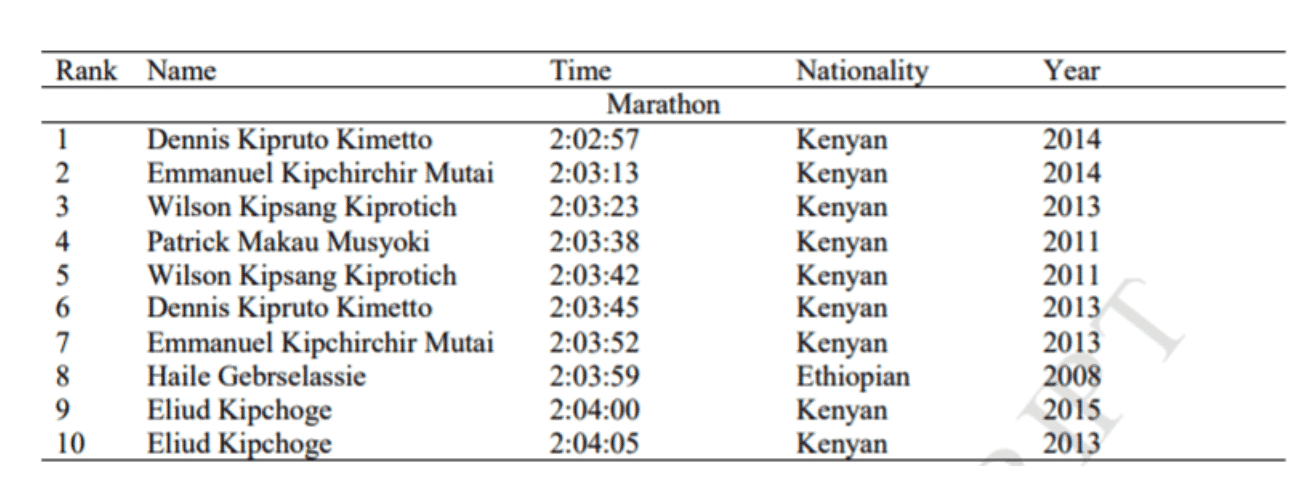14 de May de 2021
Altitude Training: Benefits and Limitations
Abstract: Altitude training is something that the vast majority of society is unaware of. If you follow cycling, you know that athletes who live in Colombia, Bolivia or Peru usually have very good personal records in cycling. This is partly because they have grown up at an altitude well above average. This increase in altitude causes oxygen concentration to be much lower, and, therefore, it is more difficult to obtain the oxygen necessary for the practice of sports. In this blog post we will analyze why this happens and what physiological repercussions it has on the body. Finally, we will discuss the two most used strategies for training in hypoxia and how they affect performance.
Benefits
Altitude training has positioned itself in the last decade as one of the most widespread trends for training among elite athletes. Endurance athletes of medium and long distances have integrated this type of preparation into their training to improve performance. In addition, with the arrival of good weather and spring, many athletes decide to do their training in the high mountains and already obtain certain physiological benefits derived from the altitude. Altitude training has long been shown to improve performance. When any person is located in areas above 2,500 meters of altitude, the oxygen level in the air is reduced. This lower oxygen concentration causes the body to enter a state of acute “hypoxia”, that is, it does not have the same level of oxygenation to which it is accustomed and requires a higher heart rate (HR) and a higher respiratory rate in order to survive.
As we have mentioned, there is an increase in HR, but the capacity to transport oxygen also increases due to an increase in the number of red blood cells. Let’s dwell on this concept for a moment. In order to understand the benefits of altitude training, we must understand how the physiology of blood transport and muscle oxygenation works. The red blood cells that are part of the blood have a protein called hemoglobin. Hemoglobin is responsible for transporting oxygen to all parts of the body and is what gives the blood that intense red color. As the blood circulates through the body, hemoglobin allows oxygen molecules to be released and pass to the muscles to produce energy. Therefore, the more red blood cells we have (always accompanied by their hemoglobin), the greater oxygenating power we will have and, consequently, the higher performance. That said, and in the form of an anecdote, there is a disease called thalassemia whose main condition is that it causes a deficiency of hemoglobin. These people tend to have higher levels of hematocrit (% red blood cells) in their blood.
Once we know of the mechanisms by which an increase in hematocrit in altitude occurs and by which the muscle is oxygenated and energy is produced, we can then analyze what science determines for altitude training in both amateur and professional sports athletes.
First of all, I would like to emphasize that it was not until the 1968 Olympic Games in Mexico that the sports world became aware of the benefits and detriments of altitude and performance (1). In these Olympics, those people who had acclimated themselves to altitude training and who had already suffered from oxygen deficiency during sporting “performances” obtained much better records than those who had never participated in any competition at high altitudes. During these Olympic Games, a clear difference was seen in all those endurance events that had a long duration. As we have mentioned before, people who are used to training in high altitudes have been subjected to the stressor of hypoxia and, therefore, have a greater capacity to transport oxygen than people who have not. Once the benefits of altitude were known, the prevalence of victories by athletes of certain nationalities in endurance events such as the marathon was understood (see Table 1). We can see how the most predominant nationality is Kenyan, a country that is located approximately 2000 – 2500 meters above sea level.

Table 1. Times for the last years of the marathon and their nationality. Flaherty G, O’Connor R, Johnston N. Altitude training for elite endurance athletes: A review for the travel medicine practitioner. Travel medicine and infectious disease. (2)
There is much controversy between the different training models that can be performed at high altitudes and their functionality. However, there is no doubt that a period of time at a high altitude can cause increases in blood hematocrit levels (3) and, therefore, improve performance (4).
If we analyze in depth what happens when athletes train at high altitudes, we find that multiple changes occur at the blood, lung and muscle level. For example, the study by Flueck M. et al. (5) analyzed the changes in proteins that occurred during altitude training. This study, although old, is one of the most profound on the changes that occur at the muscular level and where they saw that altitude training caused an increase in the GLUT-4 protein responsible for introducing glucose into the cell and producing energy.
On the other hand, Terrados et al. did a very interesting experiment in which they simulated a reduction in oxygen levels in one leg (simulating an altitude of 2300 m) and subjected it to a “bout” of exercise. They replicated the same exercise in another leg with normal oxygen levels (6) and, as could be expected, the hypoxic leg obtained better results in enzymes such as citrate synthase (29% vs. 12%) and hemoglobin (8% vs. -6%). This theory is supported by the study by Hun-young Park (2016) in which they concluded that training at high altitudes seems to be more effective than training at sea level for improving oxygen transport and aerobic capacity (7). Finally, along the same lines, it has been shown that hematocrit levels in the blood increase after only a few hours at altitudes> 5000 meters and that it remains in the blood at least 16 days if you stay at that altitude (8). However, how good can it be to spend so much time at high altitudes? Are there any health risks? And for performance?
Limitations
It is known that prolonged exposure to heights can cause muscle damage. Certain studies affirm that, if already at a moderate altitude a reduction in muscle mass can occur as a result of hypoxia, when too long a time is spent at an altitude above 2500 m the loss can be more severe (9, 10). The problem is not only that muscle mass is reduced, but also that there is a loss in oxidative capacity within the muscle and that in turn causes performance to be impaired (11). It is because of all this that the periods of time spent at high altitudes and the training carried out by both professional and amateur athletes must be very well prescribed by their coaches to get the best possible results.
In this sense, we are going to break down the set of training sessions and strategies used to improve performance. One of the strategies that has already been shown to have performance benefits is living at a high altitude, but training at sea level. The various studies carried out on athletes were seen as 4 weeks of stay in places between 2000 and 2500 meters but with training done at sea level, this could offer improvements in the “metabolic” economy (12). In summary, these athletes improved their marks and their energy efficiency after this period of living at high altitudes.

Another strategy that has been carried out for altitude training is just the opposite. Athletes live in conditions of normal pressure (they have the same amount of oxygen as at sea level) but they train in hypoxic conditions, pretending to be above 2000 meters. Thus, for example, the study by Milet GP et al. shows that athletes who followed this type of intervention improved their endurance performance (13). However, we don’t want to end this blog post without mentioning the potential problems that can result from poor altitude training planning and the health risks that come with it.
The problems derived from training in hypoxia are divided into three large families, pulmonary edema, cerebral edema and “altitude sickness”. All of them are the result of taking the body to a state to which it is not used and to an environment in which the oxygen concentration is much lower than normal. We are not talking about a small muscle injury, but depriving the body of oxygen, and that can lead to major health problems.
That is why, as a conclusion, we would initially recommend that if any athlete is thinking of doing an altitude intervention, that they first talk to their coach and a strategy that can improve performance is correctly planned. Second, we would like to comment that there is clear evidence that this type of training can benefit any type of result simply because of the amount of red blood cells that are created. It is one of the strategies most followed by cyclists and endurance athletes.
And finally, we would like to emphasize that the ultimate purpose of doing this type of training or training strategies is to be able to improve as athletes, but also to enjoy natural environments as beautiful as those one can find at that altitude. Beyond personal marks and career times, there is enjoying a sport and the opportunity that sport offers us. That is why, we encourage everyone to choose that activity that they are most passionate about and to take advantage of it and have an active and healthy life.
Bibliography
- Saunders PU, Pyne DB, Gore CJ. Endurance training at altitude. High altitude medicine & biology. 2009;10(2):135-48.
- Flaherty G, O’Connor R, Johnston N. Altitude training for elite endurance athletes: A review for the travel medicine practitioner. Travel medicine and infectious disease. 2016;14(3):200-11.
- Zubieta-Calleja G, Paulev P, Zubieta-Calleja L, Zubieta-Castillo G. Altitude adaptation through hematocrit changes. Journal of physiology and pharmacology. 2007;58(5):811-8.
- Green HJ. Altitude acclimatization, training and performance. Journal of science and medicine in sport. 2000;3(3):299-312.
- Flueck M. Plasticity of the muscle proteome to exercise at altitude. High Altitude Medicine & Biology. 2009;10(2):183-93.
- Terrados N, Jansson E, Sylven C, Kaijser L. Is hypoxia a stimulus for synthesis of oxidative enzymes and myoglobin? Journal of Applied Physiology. 1990;68(6):2369-72.
- Park H-y, Hwang H, Park J, Lee S, Lim K. The effects of altitude/hypoxic training on oxygen delivery capacity of the blood and aerobic exercise capacity in elite athletes–a meta-analysis. Journal of exercise nutrition & biochemistry. 2016;20(1):15.
- d’Alessandro A, Nemkov T, Sun K, Liu H, Song A, Monte AA, et al. AltitudeOmics: red blood cell metabolic adaptation to high altitude hypoxia. Journal of proteome research. 2016;15(10):3883-95.
- Howald H, Hoppeler H. Performing at extreme altitude: muscle cellular and subcellular adaptations. European journal of applied physiology. 2003;90(3):360-4.
- Mizuno M, Savard GK, Areskog N-H, Lundby C, Saltin B. Skeletal muscle adaptations to prolonged exposure to extreme altitude: a role of physical activity? High altitude medicine & biology. 2008;9(4):311-7.
- Hoppeler H, Vogt M, Weibel ER, Flück M. Response of skeletal muscle mitochondria to hypoxia. Experimental physiology. 2003;88(1):109-19.
- Friedmann‐Bette B. Classical altitude training. Scandinavian journal of medicine & science in sports. 2008;18:11-20.
- Millet GP, Roels B, Schmitt L, Woorons X, Richalet J-P. Combining hypoxic methods for peak performance. Sports medicine. 2010;40(1):1-25.

